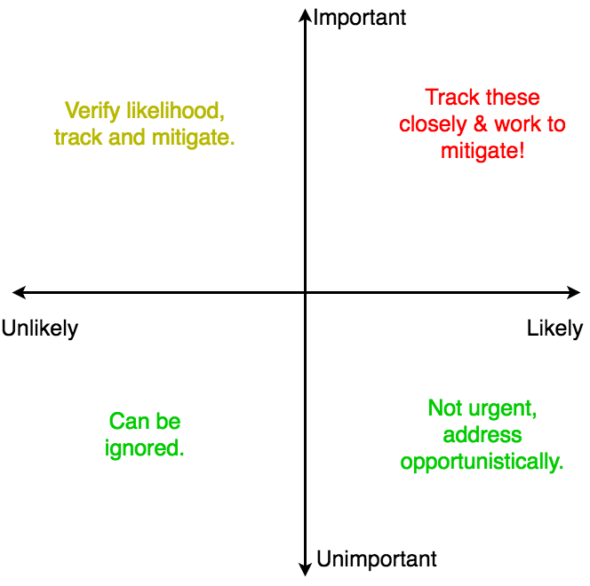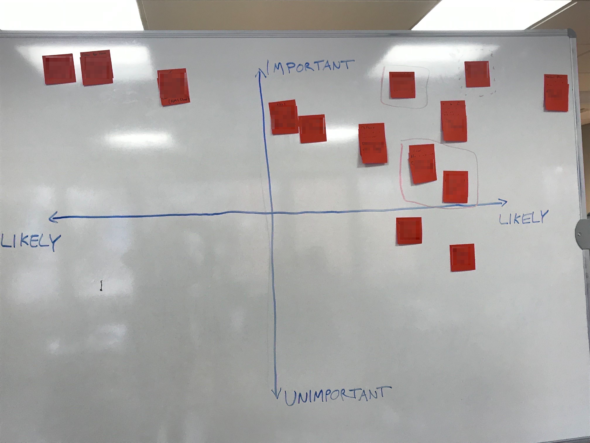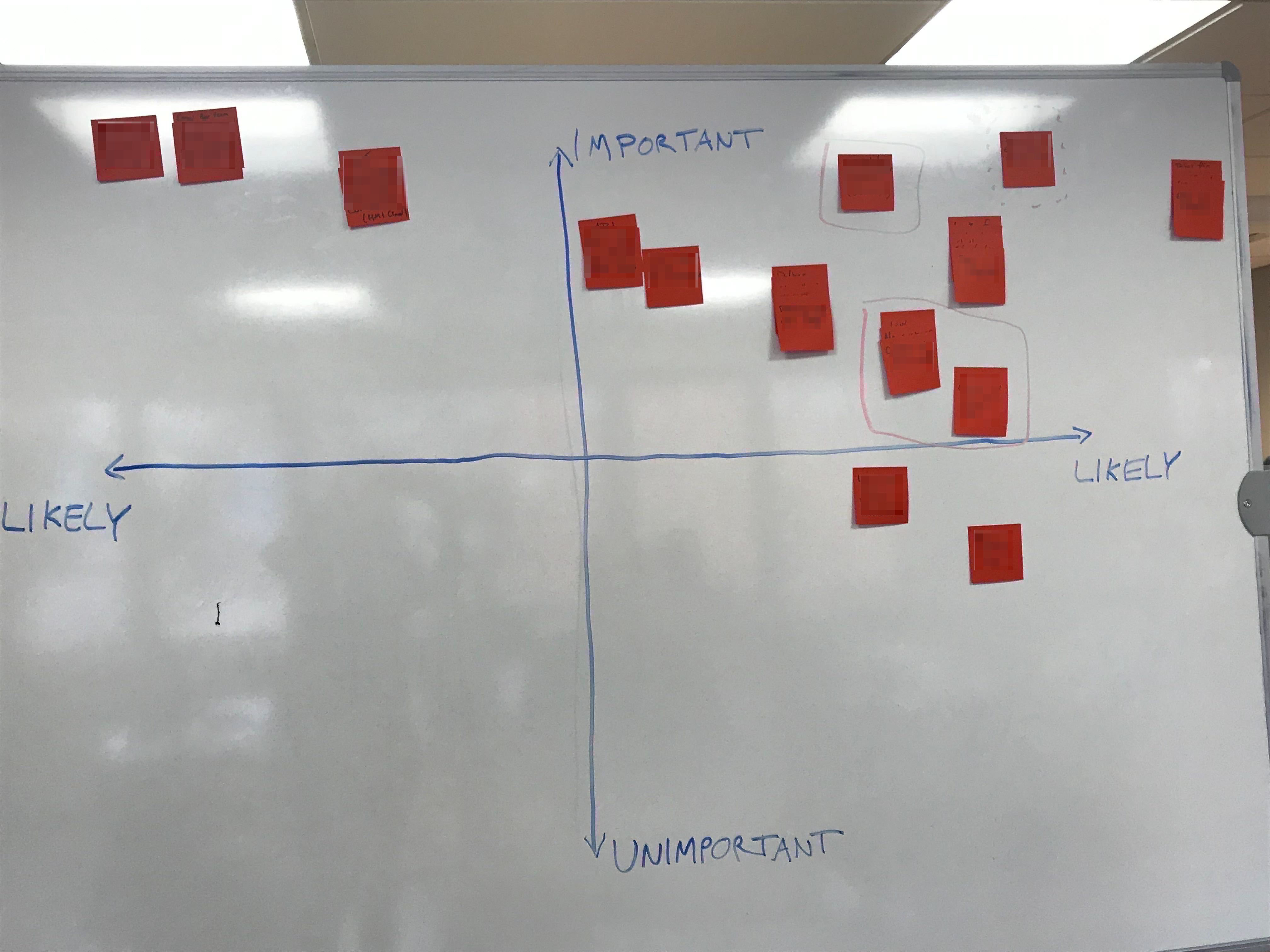Article summary
The “Hopes and Fears” Design Thinking exercise is a great way to foster discussion around our client’s worries and hopes about the project, especially early on in the process. For a recent project, I was researching ways to get more actionable output from the exercise. I found a fantastic blog post from Innovator Ltd on how to organize fears into a coordinate system. This approach worked great for us, and it smoothly dovetailed into project execution.
Hopes and Fears Overview
In case you’re not familiar with the Hopes and Fears exercise, here’s how it goes. Start by gathering two sets of different-colored Post-it notes, and pass them out to all participants. Ask everyone to spend five to ten minutes jotting down all their hopes and sticking them on the wall. After everyone posts their hopes, the facilitator should group them into common themes and lead a discussion on each grouping. The process is repeated for fears. For a more in-depth description, check out my colleague Kimberly’s Hopes and Fears post in her series on Design Thinking exercises.
Can We Get More Value?
This exercise is great at surfacing issues, and in the past, I’ve made sure to record the various hopes and fears digitally. From there, it always felt like we didn’t actually use them, but the discussion was nice.
I realized that “Fears” were just potential risks. And, as risks, their impact should be measured, tracked, and mitigated. Instead of simply recording the hopes and fears, I asked our client and team to map their fears onto the coordinate system I read about on Innovator Ltd’s blog:

We discussed each fear and placed it along the two axes:
- How likely is this to happen?
- How important is this? How bad would it be if this fear were realized?
The quadrants break down as follows:
- Unlikely and Unimportant: These can be discarded.
- Likely and Unimportant: The impact of these risks is expected to be low, so they don’t present an urgent concern. Work to mitigate these risks should be lower-priority.
- Unlikely and Important: Verify just how unlikely these risks are, and track them throughout the project.
- Likely and Important: These are serious risks, so track them and develop a plan to mitigate them ASAP.
I was pleasantly surprised by how effective this approach was. Not only did we surface risks that could translate directly into our team’s usual project tracking and risk mitigation infrastructure, but it had a side benefit of clarifying the goals of the project.
Some risks that we thought were important turned out to be unimportant to our clients. Without this discussion, we would have undertaken work with some misunderstandings.
For those reasons, I’ll continue to recommend that our teams use this approach in the future.

Next Steps
After completing the Hopes and Fears exercise, you should track the fears that have been categorized as Likely and Important closely. At Atomic, we use a simple risk tracking spreadsheet. In our risk tracker, each risk (or fear) is listed with the following:
- An estimation of severity or importance (high, medium, or low).
- A description of the outcome if the risk is not mitigated. For example, “If we don’t fully estimate the backlog, we won’t know the total scope and could make a mistake in prioritization.”)
- An action plan for mitigation, along with a date describing the last action that was taken.
As risks are resolved or fully mitigated, they are moved off the risk sheet into a “resolved” sheet for posterity. Our Delivery Lead then meets with our client bi-weekly to review the risks and agree on steps to mitigate them.
Using this Hopes and Fears approach in the project kickoff felt like a hack to make quick progress on tracking and mitigating risks, and it also built consensus with our team and our client around project goals.

